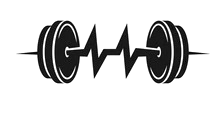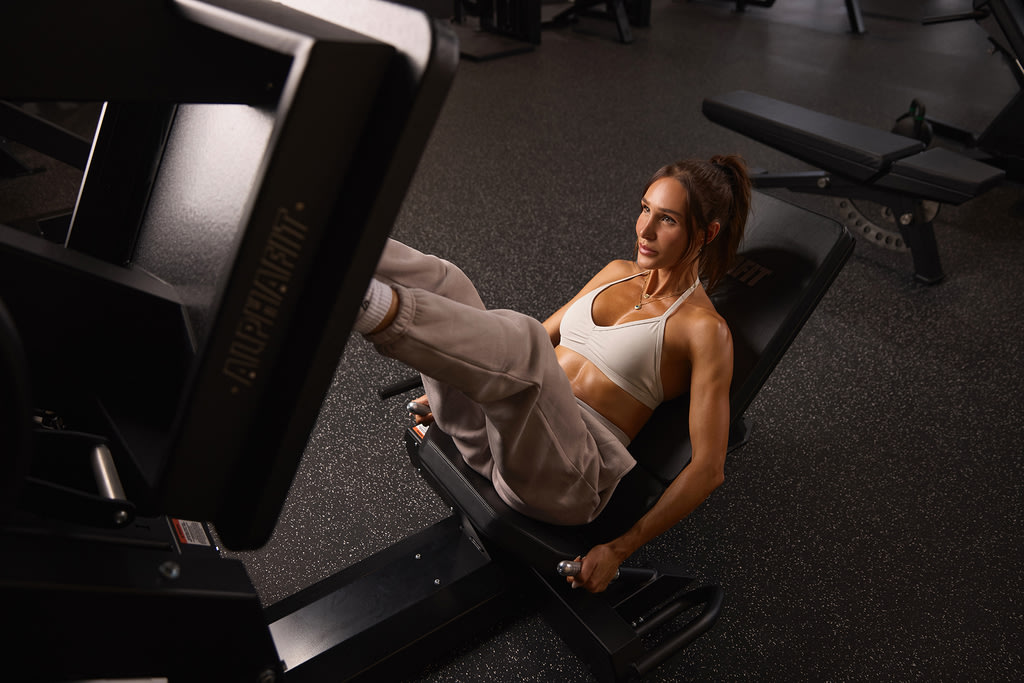Making the Most of Your Gym Experience: An All-Inclusive Guide for Beginner Exercisers
It can be both thrilling and a little intimidating to enter a gym for the first time. Although rows of strange machines and weights may seem daunting, with the correct direction, you can swiftly become accustomed to this setting and realize all of its fitness-related potential. This thorough guide, written especially for newcomers, demystifies common exercise equipment and offers helpful tips on how to use it efficiently and safely.
Before You Begin: Preparation and Etiquette
Prior to engaging with any equipment, a few essential steps will ensure a smooth and respectful gym experience:
- Consult a Professional: If you have any underlying health conditions or concerns, it’s always wise to consult a doctor or a certified personal trainer before starting a new exercise program.
- Dress Appropriately: Wear comfortable athletic clothing that allows for a full range of motion, and supportive athletic shoes.
- Hydrate: Bring a water bottle and sip throughout your workout.
- Warm-Up: Always start with a 5-10 minute dynamic warm-up. This could include light cardio on a treadmill or elliptical, followed by dynamic stretches like arm circles and leg swings.
- Wipe Down Equipment: It’s common courtesy to wipe down machines after use with the provided sanitizing wipes or spray.
- Re-rack Weights: Always return weights, dumbbells, and barbells to their designated places.
- Share Equipment: If someone is resting between sets on a machine you want to use, politely ask “May I work in?” This means you’ll alternate sets with them.
Understanding Common Gym Equipment
Gyms typically house several categories of equipment, each serving distinct fitness purposes.
I. Cardiovascular Machines (Cardio Equipment)
These machines are designed to elevate your heart rate, improve endurance, and burn calories.
- Treadmill:
- Function: Simulates walking, jogging, or running.
- How to Use: Step on, select “Quick Start” or a pre-set program. Adjust speed and incline using the controls on the console. Hold the handrails for balance if needed, but avoid leaning on them excessively as it reduces the workout’s effectiveness.
- Beginner Tip: Start with a brisk walk, then gradually increase speed or add a slight incline.
- Elliptical Trainer:
- Function: Provides a low-impact full-body workout, engaging both legs and arms.
- How to Use: Step onto the foot pedals and grasp the moving handlebars. Begin a smooth, gliding motion. You can vary resistance and incline (if available).
- Beginner Tip: Focus on a fluid motion and engaging your core.
- Stationary Bike (Upright or Recumbent):
- Function: Simulates cycling. Upright bikes mimic road bikes, while recumbent bikes offer back support.
- How to Use: Adjust the seat height so your leg has a slight bend at the knee when the pedal is at its lowest point. Select resistance level.
- Beginner Tip: Start with a comfortable resistance and duration.
- Stair Climber/Stepper:
- Function: Mimics climbing stairs, excellent for glutes and leg strength.
- How to Use: Step onto the pedals or stairs. Adjust speed and resistance.
- Beginner Tip: This can be challenging; start slowly and hold the handrails for balance until comfortable.
- Rowing Machine:
- Function: Provides a full-body, low-impact workout, engaging legs, core, and upper body.
- How to Use: Sit on the sliding seat, feet strapped in. Grasp the handle. The movement involves a powerful leg drive, followed by leaning back slightly and pulling the handle towards your abdomen. Reverse the motion smoothly.
- Beginner Tip: Focus on the “legs, core, arms; arms, core, legs” sequence. Power comes mostly from the legs.
II. Strength Training Equipment
This category includes machines and free weights designed to build muscle and increase strength.
A. Selectorized Machines (Pin-Loaded Machines): These are excellent for beginners as they guide your movement, reducing the risk of improper form.
- Leg Press Machine:
- Function: Works quadriceps, hamstrings, and glutes.
- How to Use: Sit on the seat, place your feet shoulder-width apart on the platform. Adjust the seat or backrest so your knees are at a 90-degree angle. Push the platform away, extending your legs without locking your knees. Slowly return to the starting position.
- Beginner Tip: Start with a light weight to master the movement.
- Chest Press Machine:
- Function: Works chest (pectorals), shoulders (deltoids), and triceps.
- How to Use: Sit on the seat, grasp the handles. Adjust the seat so the handles are roughly at chest level. Push the handles forward, extending your arms, then slowly return.
- Beginner Tip: Keep your back flat against the pad.
- Lat Pulldown Machine:
- Function: Works back (latissimus dorsi) and biceps.
- How to Use: Sit on the seat, secure your thighs under the pads. Grasp the bar with a wide grip. Pull the bar down towards your upper chest, squeezing your shoulder blades together. Slowly return.
- Beginner Tip: Avoid leaning back too far. Focus on pulling with your back muscles.
- Leg Extension Machine:
- Function: Isolates quadriceps.
- How to Use: Sit on the machine, position the pad against your shins just above your ankles. Extend your legs fully, then slowly lower the weight.
- Beginner Tip: Control the movement; avoid swinging the weight.
- Leg Curl Machine (Seated or Lying):
- Function: Isolates hamstrings.
- How to Use: Position yourself on the machine so the pad is against your lower calves. Curl your legs, bringing your heels towards your glutes, then slowly extend.
- Beginner Tip: Focus on squeezing your hamstrings.
B. Free Weights (Dumbbells, Barbells, Kettlebells): These offer a greater range of motion and engage more stabilizing muscles, but require more attention to form.
- Dumbbells:
- Function: Versatile for a wide range of exercises (e.g., bicep curls, shoulder press, lunges, rows).
- How to Use: Start with very light weights to learn the movement patterns. Watch instructional videos or seek guidance from a trainer.
- Beginner Tip: Focus on slow, controlled movements and proper form over heavy weight.
- Barbells:
- Function: Used for compound exercises like squats, deadlifts, bench press, and overhead press.
- How to Use: These are more advanced. It is highly recommended to seek guidance from a qualified personal trainer before attempting barbell exercises, especially squats and deadlifts, to ensure proper form and safety. Start with just the bar to learn the movement.
- Beginner Tip: Never load a barbell without knowing proper lifting technique. Always use safety clips (collars) to secure the weight plates.
III. Cable Machines: Highly versatile for targeting various muscle groups with constant tension throughout the movement.
- Function: Used for exercises like cable rows, cable tricep pushdowns, cable bicep curls, cable chest flyes, and many more.
- How to Use: Attach the desired handle (rope, bar, single handle). Adjust the pulley height. The resistance remains consistent throughout the range of motion.
- Beginner Tip: Start with a light weight. Experiment with different attachments and pulley heights to feel how they target different muscles.
IV. Bodyweight Exercise Areas: Many gyms have open spaces for exercises that use your own body as resistance.
- Examples: Push-ups, squats, lunges, planks, crunches, burpees.
- Beginner Tip: These are excellent starting points for building foundational strength and can be modified to suit your fitness level.
V. Stretching Areas/Mats: Designated areas with mats, foam rollers, and sometimes resistance bands for warm-ups, cool-downs, and flexibility work.
- Function: Essential for improving flexibility, reducing muscle soreness, and preventing injury.
- How to Use: Perform static stretches (holding a stretch for 15-30 seconds) during your cool-down. Use foam rollers to release muscle tension.
- Beginner Tip: Never stretch cold muscles. Only stretch to the point of a gentle pull, not pain.
Crafting Your First Workouts
For your initial visits, focus on learning the machines and feeling the movements. A sample beginner full-body workout using machines could look like this:
- Warm-up: 5-10 minutes on the treadmill or elliptical.
- Leg Press: 2 sets of 10-12 repetitions.
- Chest Press: 2 sets of 10-12 repetitions.
- Lat Pulldown: 2 sets of 10-12 repetitions.
- Leg Extension: 2 sets of 10-12 repetitions.
- Leg Curl: 2 sets of 10-12 repetitions.
- Cable Tricep Pushdown (using rope attachment): 2 sets of 10-12 repetitions.
- Dumbbell Bicep Curl: 2 sets of 10-12 repetitions (start with very light dumbbells).
- Plank: 2 sets, hold for 20-30 seconds.
- Cool-down: 5-10 minutes of static stretching.
Perform this type of workout 2-3 times per week, with a rest day in between. As you get stronger, you can gradually increase the weight, repetitions, or add more sets.
Seeking Professional Guidance
While this guide provides a solid foundation, nothing beats personalized advice. Consider investing in a session or two with a certified personal trainer. They can:
- Assess your fitness level and goals.
- Demonstrate proper form for various exercises.
- Create a tailored workout plan specific to your needs.
- Provide motivation and accountability.
The gym is a powerful tool for achieving your fitness aspirations. By understanding the equipment, practicing proper form, and embracing a consistent approach, you’ll soon feel confident and capable in this dynamic environment. Your fitness journey has just begun, and with each successful workout, you’re building a stronger, healthier you.

